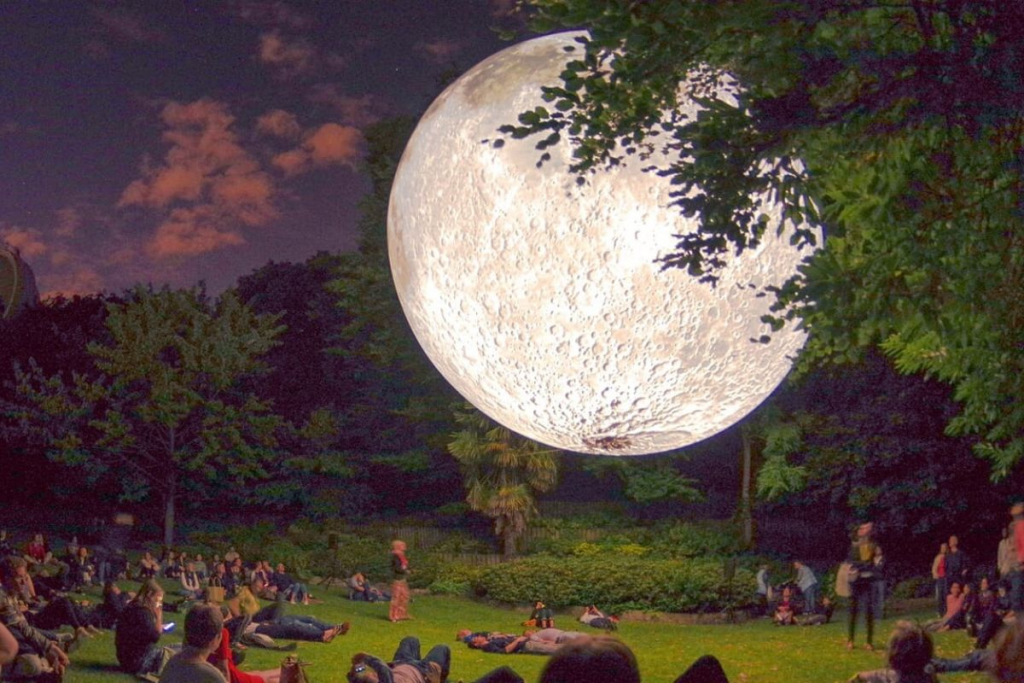Tokyo Weekender recently spoke to internationally-renowned artist and moon enthusiast, Luke Jerram, to coincide with his “Museum of the Moon” exhibition showing in Japan for the first time. Visitors to Shimokitazawa this weekend will be greeted by a huge moon hanging over the old Odakyu tracks for a third and final time.
Running until October 1, Moon Art Night Shimokitazawa also includes an exhibition by Australian artist Amanda Parer titled “Intrude” that displays giant glowing rabbits around Kitazawa Hachiman Shrine. In front of the station lies the giant “Museum of the Moon” by Jerram.
An internationally renowned artist, Jerram has appeared in Vogue, The Guardian and the New York Times with his artworks. He’s been referred to as “the most famous artist you’ve probably never heard of” for his interactive sculptures which unite audiences with art. This is the first time that his most famous artwork is shown in Japan.
“Museum of the Moon” is a 7-meter wide, light-up moon sculpture, suspended in the air, with audiences encouraged to walk around and even sit under the moon to appreciate the art.
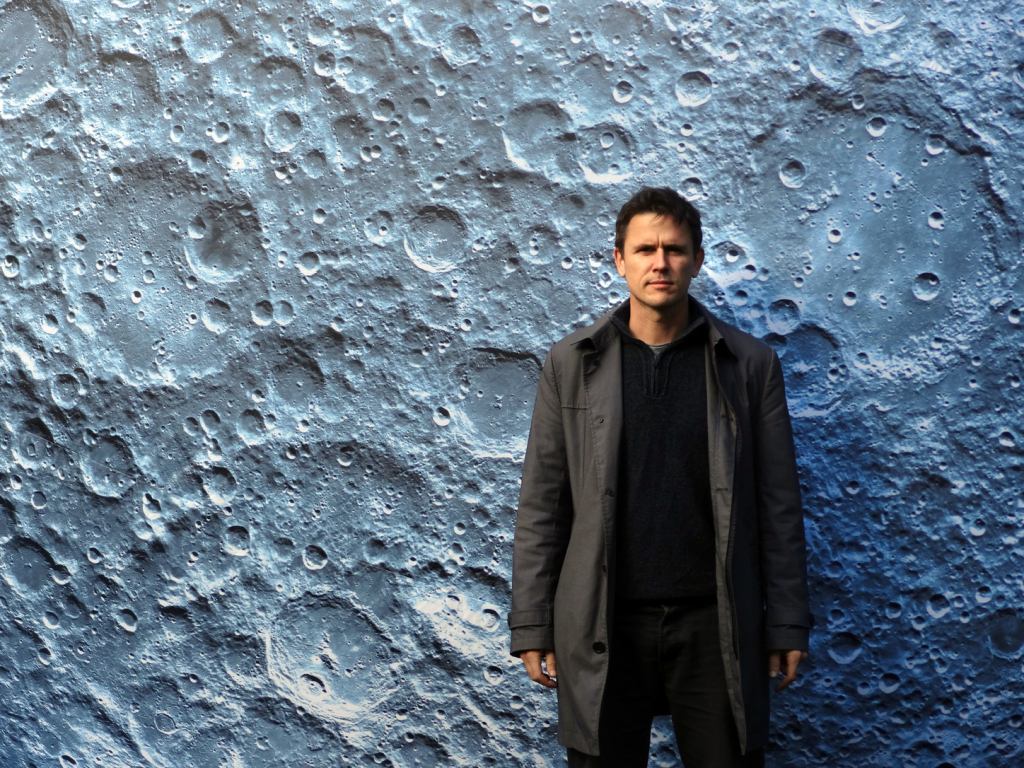
Photo (c) James Billings
Museum of the Moon
Museum of the Moon came into being in 2016, but Jerram’s idea for the project stemmed from his moon-controlled Tide sculpture back in 2001. Unfortunately, NASA did not have any images available and printing at the time wouldn’t cut it. “It took around 15 years for science and technology to catch up,” he says.
He adds that living in Bristol, England was another factor, as the city has one of the largest tidal ranges in the world. While cycling to work, Jerram would often observe the tidal variation changing dramatically, caused by the moon.
“Everywhere around the world, different cultures have different stories and mythologies in relation to the moon,” he tells TW. “This art project is touring with the idea that it collects stories, wherever it goes. We’ve been staring at the moon for 200,000 years, so there are a lot of stories and mythologies and religions that are related to the moon in lots of different ways.”
“Japan has its own story, too,” he adds. “People would go onto the roof of their houses to moon bathe at night, with the idea that the moonlight itself would make their skin paler.”
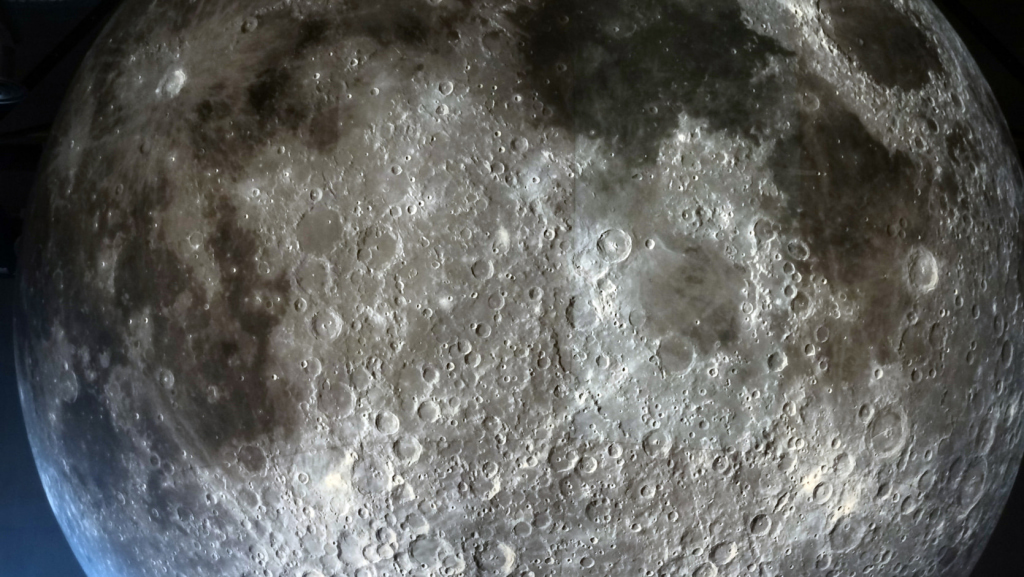
The Moon on Tour
In its six years, “Museum of the Moon” has often been placed above water or in cathedrals or churches, but where’s the most novel place he’s seen it?
India made a big impact. “The moon has great significance in Hindu culture,” he says. “They had someone singing Bollywood music [near] the moon, with synchronized swimming going on at the same time. I think that was probably the most off-the-wall experience.”
Other activities include weddings and marriage proposals, with people “probably” booking out the moon for the weddings, but the most unexpected reaction came from a different source.
“When touring the moon in London, I bumped into a space scientist from the European Space Agency who’d spent 20 years studying the surface of the moon through telescopes,” recalls Jerram. “He was in floods of tears and needed a hug because it was all a bit emotional for him. That was quite nice, actually.”
“There was also a little girl who asked me if I would put the moon back afterwards,” remembers Jerram. Naturally, he said he “definitely would.”
“Museum of the Moon” includes a soundtrack composed by Dan Jones, a long-time collaborator who makes music for Jerram’s work. “It’s there to help connect the sculpture with the surrounding architecture and help steer a particular interpretation of the artwork as well,” he says.
For this reason, music is something he likes to include in his artworks. “With the Earth Sculpture there are recordings of interviews with children about climate change,” he adds. “I want the interpretation to be about climate change.”
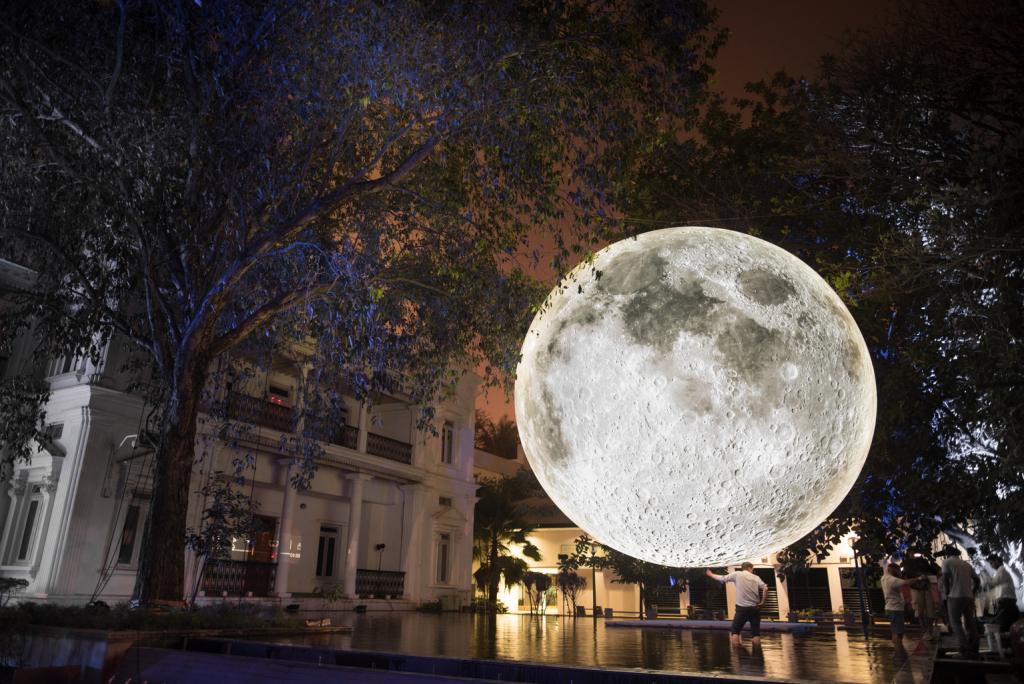
Photo by Satya Nayak (British Council)
Bringing the Moon to Japan
Jerram is no stranger to Japan, having visited more than once. “It’s an amazing, really interesting culture,” he says. “And obviously the food is brilliant as well. However, when I was in Japan, I was surrounded by skyscrapers, so I didn’t get to see the night sky so much.”
He continues: “I think that’s almost a problem. Think about Tokyo or Osaka. All those skyscrapers and lights means that you don’t get to see the night sky and stars. I think that’s what we’re missing, so I’m hoping this sculpture might help reconnect people with it.”
The showing at Moon Art Night Shimokitazawa attracted thousands of visitors in its first two days, with hundreds of tags on social media.
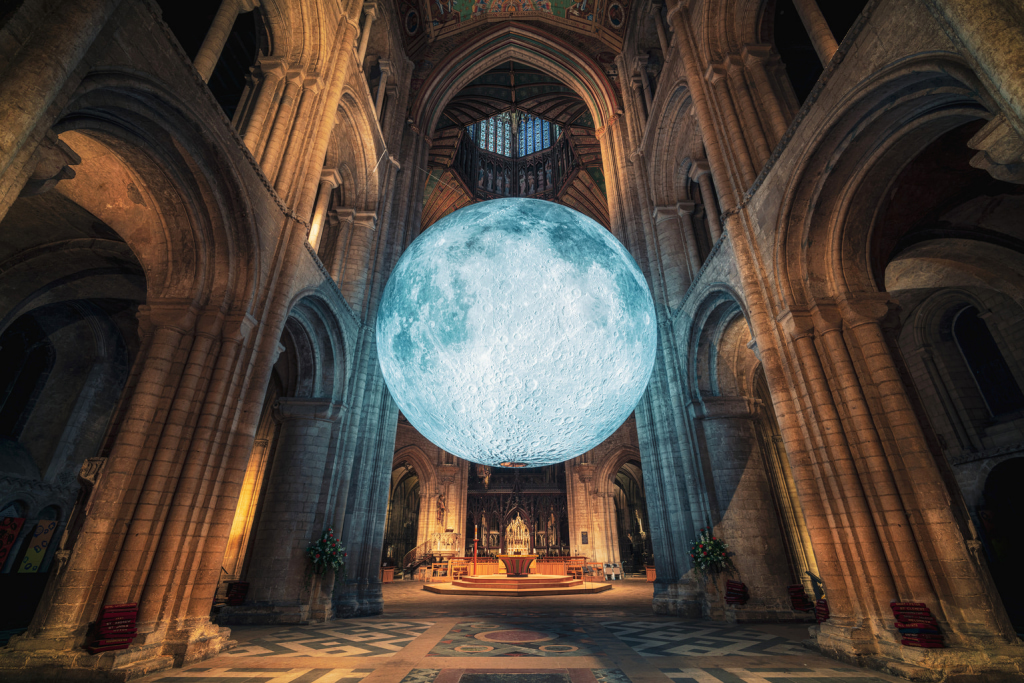
Photo (c) James Billings
The Evolution of the Moon
TW wanted to know how Jerram sees the Museum of the Moon evolving. “I’m not entirely sure,” he says. “I’m hoping to put together a book that would kind of collate all the stories and the mythologies together. I think that would be a nice thing. But at the moment, we still get one or two inquiries every day from people who want this artwork, so it’s difficult to work out where it will end.”
His repertoire also includes Mars and the Earth: “It’s on a motor which slowly turns, so it would be nice to bring that to Japan someday,” adds Jerram.
As a Fellow of the Royal Astronomical Society, one would be inclined to think Jerram prefers the night, but that’s not the case: “I’m more of a morning person,” he says. ” I drink a lot of green tea and I like to get up early in the morning. It’s a beautiful time of day.”
You can catch “Museum of the Moon” at Shimokita Senrogai Akichi until October 1, from 3pm-9pm. More information on the Moon Art Night Shimokitazawa, including a festival program can be seen here.

